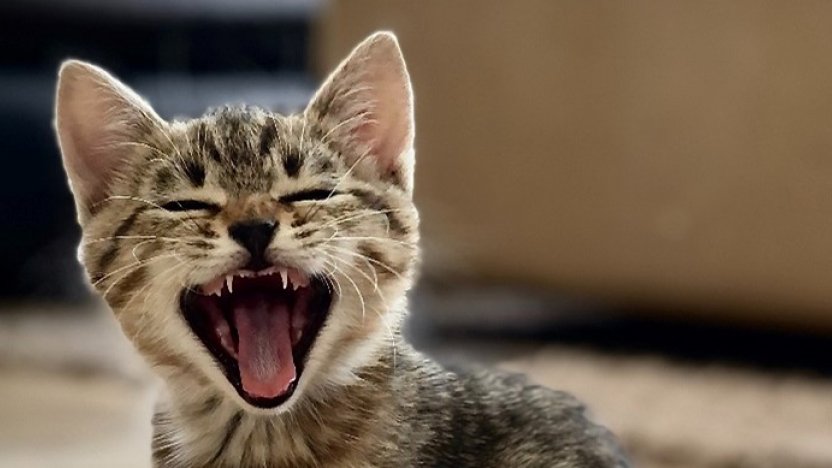Caterpillar wins catfight over feline trademark at the EUIPO

Caterpillar, Inc has successfully challenged the August 2020 European trademark application for ‘FLOWERCAT’ on the basis that the mark infringes its earlier rights to both the word and figurative (device) marks for ‘CAT’. Noa Rubingh reviews the recent ruling.
The 23 August decision by the Board of Appeal of the EU IP Office (EUIPO) illustrates that a word can be considered to be devoid of or lacking in distinctiveness for certain goods, while at the same time fulfilling the function of a trademark for other goods. In this case, it was discussed that although the word 'cat' does not have a distinctive character for toys in the shape of cats or toys made for cats, this word can have distinctive character for replicas of vehicles, machines, tractors, trucks or trailers, among other things.
European trademarks and likelihood of confusion
Registered European trademark (EUTM) owners can oppose a later application on the grounds of likelihood of confusion, as set out in Article 8(1)(b) of the EU Trademark Regulation (EUTMR). This prevents a new trademark from taking unfair advantage of the reputation of an already existing trademark.
Whether there is a likelihood of confusion is determined by a careful assessment of the degree of similarity between the mark and the sign and the products and services for which the mark and sign were filed. This assessment must take into account:
- the public for whom the goods and services are intended;
- the visual, aural or conceptual similarity between the marks;
- the nature, purpose and manner of use of the goods and services designated, and whether they compete with or complement each other; and
- any additional factors, such as producers, channels of distribution and points of sale.
In addition, examiners must take into consideration the distinctive character of the existing mark to the extent that a lower degree of similarity between the goods or services can be compensated by a higher degree of similarity between the mark and the sign, and vice versa. In other words, all factors relevant to the circumstances of the case must be taken into account as part of an overall assessment.
The importance of trademark reputation
The FLOWERCAT application  was for a figurative mark in classes 7, 9, 11 and 28 (pictured right), for which Caterpillar already held its CAT trademarks (pictured below, left). Caterpillar’s opposition to the application was granted for all classes, except class 28, which includes toys. The EUIPO’s Opposition Division found there to be an absence of likelihood of confusion for this class, as toys may be specially designed for cats and so the word 'cat' is too descriptive to serve as a trademark for such products.
was for a figurative mark in classes 7, 9, 11 and 28 (pictured right), for which Caterpillar already held its CAT trademarks (pictured below, left). Caterpillar’s opposition to the application was granted for all classes, except class 28, which includes toys. The EUIPO’s Opposition Division found there to be an absence of likelihood of confusion for this class, as toys may be specially designed for cats and so the word 'cat' is too descriptive to serve as a trademark for such products. 
For the other classes, CAT was found to have distinctive character in relation to the goods, with the mark having a relatively high scope of protection due to its intensive use and notoriety. This reputation did not affect the trademark protection based on class 28, however, because the products in the other classes, such as machines and tools, were not considered similar to toys.
Caterpillar overturns failed opposition
Caterpillar subsequently lodged an appeal with EUIPO’s Board of Appeal, arguing that 'cat' does have distinctive character for the vast majority of the goods in class 28 and that EUIPO should not only look at the sub-class covering cat toys. In addition, when the CAT mark was registered for class 28, the company specifically indicated that the goods concerned were toys in the form of replicas of, inter alia, vehicles, machines, tractors, lorries or trailers. Finally, the company argued that this and the fact that FLOWERCAT has the same description in class 28 regarding replicas were not taken into account by the Opposition Division in its decision.
Since the goods had already been found to be identical during the opposition, the considerations regarding the visual, aural and conceptual similarity between CAT and FLOWERCAT were the most interesting in this recent ruling. Here, the Board of Appeal considered:
- Although consumers often pay more attention to the beginning of a word or phrase, the word 'FLOWER' has been shown to be less distinctive than the word 'CAT' in this instance. In other words, English-speaking consumers would interpret the term ‘flower’ as a characteristic or description of the cat, rather than the other way around. This indicates a conceptual similarity.
- The pronunciation of both brands is similar, which means that there is also an aural similarity.
- There is also a visual similarity because both trademarks consist of simple letters without any additional design features to change the impression of the trademark.
- The CAT marks are also distinctive for toys (on the basis of the toy replicas), and the goods for which protection is requested are identical to the goods. This creates a likelihood of confusion, since the newly applied trademark consists exclusively of the earlier trademark (CAT) with another, less distinctive word before it (FLOWER).
In short, the Board of Appeal decided that there was also a likelihood of confusion in respect of the goods in class 28. It found that the Opposition Division should have further examined whether there was a likelihood of confusion in respect of the other identical or similar goods in class 28. Caterpillar's appeal succeeded, therefore, and the earlier decision of the Opposition Division was annulled.
Get in touch for more information on trademark registrations and oppositions, or read our article ‘Trademark tips: Understanding the opposition procedure’.
Noa Rubingh works at the Knowledge Management department. She is based at our office in Amsterdam.